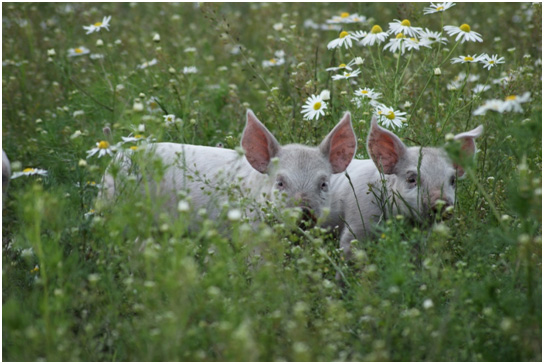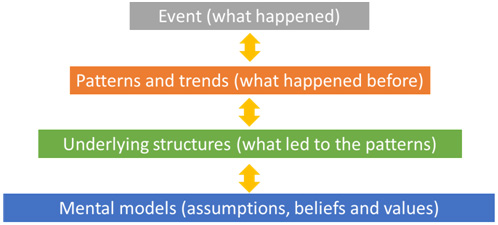Antimicrobials (AM) constitute fundamental instruments for the control of infectious diseases. However, use of AM may trigger a natural evolutionary selection, resulting in adapted bacteria which may obtain, express, and propagate genes that are more fitting to survival than the original bacteria. Therefore, the use of AM substances should be prudent, especially for those of critical importance to human medicine. This will enable us to keep the last line of defence against infections in humans. Moreover, a prudent use will also ensure that animals in need of AM treatment can be treated also in the future.

The significance of the association between the antimicrobial use (AMU) in animals and the emergence of resistance in humans is hard to assess. Still, it makes sense to keep the development of AMR in animal reservoirs to a minimum. However, to avoid animal welfare issues, animals in need of treatment should be treated. Both these concerns should be considered, and one way of doing this is to consider antimicrobial stewardship.
Antimicrobial stewardship can be defined as “A coherent set of actions which promotes using antimicrobials responsibly” (Dyar et al., 2017). The primary goal is “to optimise clinical outcomes while minimising unintended consequences of antimicrobial use” (Dellit et al., 2007). To sustain AM stewardship programmes, monitoring of AMU and AMR is fundamental. Such monitoring programmes provide data that enable risk evaluation and management based upon an interpretation of patterns and tendencies of AMU related to the emergence of AMR. Comparison of AMU at a national and international level can be undertaken to study the effect of various control measures within a given time frame. One of such interventions may be to limit the use of a given AM substance.
Some control measures apply at the level of the individual livestock producer, whereas others need to be set up at the sector-level or national lever before they can be expected to have an impact. For example, livestock trucks are known for spreading infections between farms, and here, it may be necessary with a sector-wise approach to ensure clean trucks to prevent infections. Similarly, some infections associated with a high AMU may best be combated through eradication in a region requiring a public-private partnership for the eradication to become a success.
To understand which measures would work at which level and how, Systems Thinking may be applied. Systems Thinking is a way of making sense of the complexity of the world by looking at it in terms of wholes and relationships rather than by splitting it down into its parts. It is being used as a way of exploring and developing effective action in complex contexts.

Figure 1 – Model of the different elements of Systems Thinking
Structure of the workshop
First, the participants will receive a lecture by Lis about prudent use of AMU. Then, each participant is expected to provide an overview of the AMU surveillance and control system in place in a selected livestock species in their own country, by answering Q1-Q12 beneath. Thirdly, the participants will join a common virtual room to compare and discuss answers to Q13-Q15. Finally, the participants will present answers to Q13-Q15 showing what they have learnt regarding prudent use of antimicrobials in a 15-minute presentation on Wednesday.
Questions to address
- Where is your country located regarding mg antimicrobials per PCU on the ESVAC comparison figure? – please see European Medicines Agency (2021) in the reference list
- Has there been a change in the location on the figure during the last 6 years?
- Is monitoring for AMU in place in you country?
- If yes, since which year
- Is it a monitoring programme or a surveillance programme, where the latter means that actions are in place if use is above a certain threshold?
- Is the use in the species subdivided into age groups? And if so, how many groups are there?
- Are certain legal veterinary antimicrobials prohibited or limited in use?
- Which requirements or actions are set at the livestock producer level?
- Is AMU by prescription only?
- Are veterinarians earning parts of their income on selling antimicrobials?
- Which actions have been taken at the sectorial level?
- Which are set at the national level?
- What are three most important barriers against reduction in AMU in your country? – these should be divided into underlying structures and mental models
- Which 6 actions do you think should be put in place at individual, sectorial and national level, respectively, to effectively reduce the AMU in the species of interest? – again having in mind the underlying structures and mental models
- For each of the 6 actions, please insert them in a x-y-coordinate system, where x is impact and y is feasibility including costs.
Homework, preparation & disclaimer
To address Q1-Q12, the participants are asked to collect information from their own country prior to the workshop. Please remember that this is a workshop with exercises. Do not expect that you can necessarily find all the needed information or that you have the time to answer all 12 questions in details. The aims of the workshop is to make you start reflecting while opening up for Systems Thinking.
References:
- Dyar, O. J., Huttner, B., Schouten, J., & Pulcini, C. (2017). What is antimicrobial stewardship? In Clinical Microbiology and Infection (Vol. 23, Issue 11, pp. 793–798). Elsevier B.V. https://doi.org/10.1016/j.cmi.2017.08.026
- Dellit, T. H., Owens, R. C., McGowan, J. E., Gerding, D. N., Weinstein, R. A., Burke, J. P., Huskins, W. C., Paterson, D. L., Fishman, N. O., Carpenter, C. F., Brennan, P. J., Billeter, M., & Hooton, T. M. (2007). Infectious Diseases Society of America and the Society for Healthcare Epidemiology of America guidelines for developing an institutional program to enhance antimicrobial stewardship. In Clinical Infectious Diseases (Vol. 44, Issue 2, pp. 159–177). Oxford Academic. https://doi.org/10.1086/510393
- European Medicines Agency (2021). Sales of veterinary antimicrobial agents in 31 European countries in 2019 and 2020. In European Surveillance of Veterinary Antimicrobial Consumption, 2020. https://doi.org/10.2809/167341


